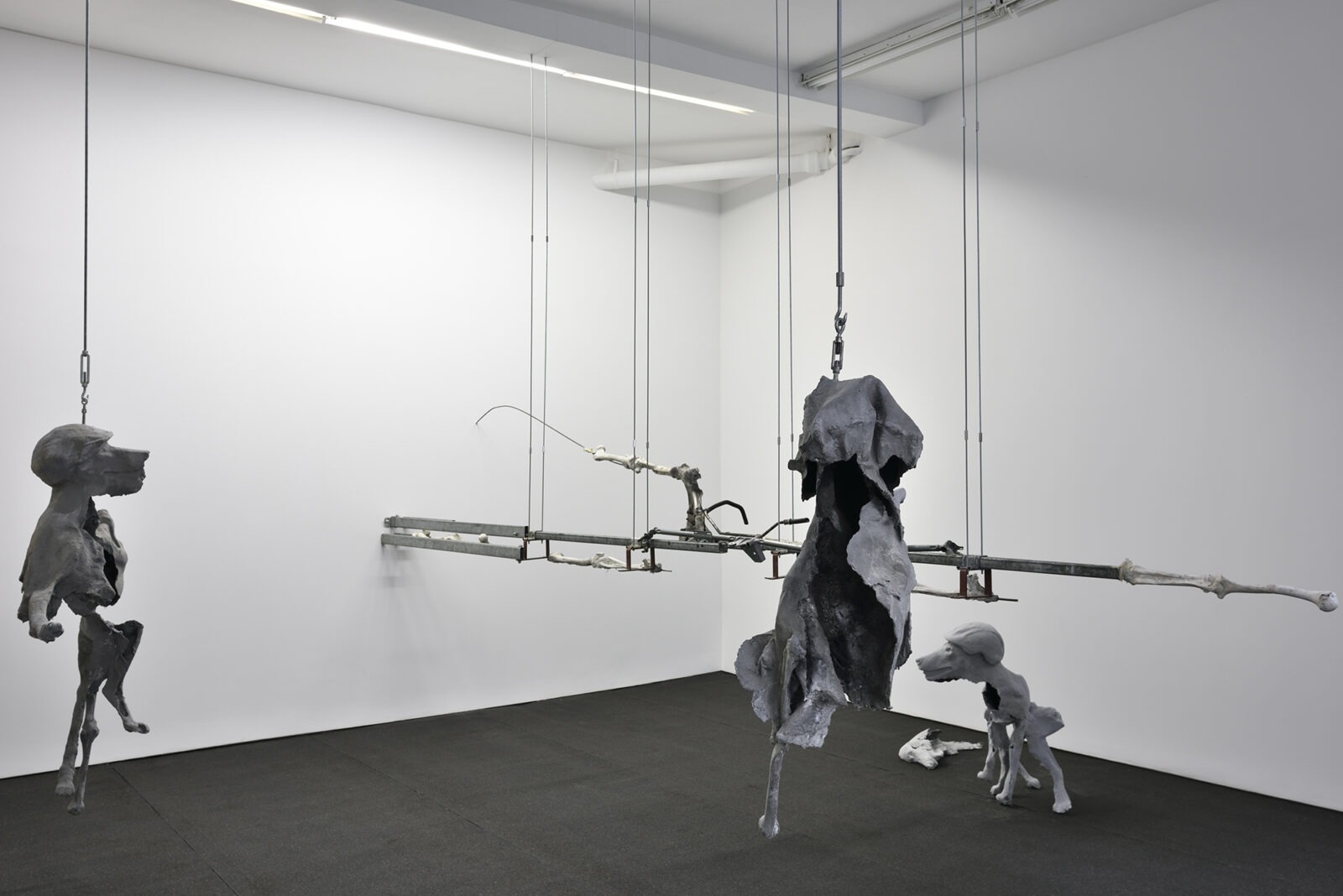Metallo Urlante
Group Exhibition
25 Jan - 29 Feb 2020
METALLO URLANTE
Giorgio Andreotta Caló
Giulia Cenci
Anna Franceschini
Diego Perrone
25 January - 29 February 2020
Metallo Urlante brings together four artists who explore different sites of tension between the living and the inanimate, stemming from Arte Povera's longstanding re-reading of the tandem between natural and the artificial, to more recent reflections on our current hyper-materialistic society. The exhibition takes its title from Valerio Evangelisti's 1998 science-fiction novel of the same name. Inspired by medieval gothic and heavy metal music, its four stories announce the dehumanization of the body though technology. Metal is not merely a motionless matter but a living entity that penetrates humans through different protheses, adulterations and mutations. Playing with the opposition between the supposedly inert (metal) and the vigorous (screaming), the works develop different approaches to the tension between steady and animated materials and the spatial relations they create.
Giulia Cenci engages the gallery's ground floor space with a hybrid installation that integrates animal and industrial elements as part of an ambiguous, post-human landscape. Misplaced, dis-integrated dog osseous matter is traversed by industrial metal connectors articulating the sharp duality between the tactility and unattainability of the scene. The sculptures' points of attachment, which form an invisible grid, constantly shifts based on the rhythm the viewer sets within the space, avoiding any static reading.
Giorgio Andreotta Calò's spatial work samples natural material fragmented on the floor, creating a constructed landscape. His Carotaggi (core samples) take their cylindrical, elongated shape from the process of material extraction from different geological sites. Displayed horizontally, the works eschew the vertical alignment of geologic time scales.
Perrone’s engagement with the landscape addresses constructed perceptions of nature inside a highly acculturated context - the exhibition space. His cast glass sculptures are "living landscapes" from his home region of Asti, Piemonte with local symbols and traces of tractor marks in the land.
Expanding the possibilities of the cinematic apparatus, Anna Franceschini reanimates the inert by activating sites of industrial production and commercial display through the moving image. Cartaburro Arabesco is a piece of furniture set in motion by film and video techniques. Its sinuous, organic shape makes reference to Carlo Mollino's design of crystal planes which serve as surrealist displays. Franceschini re-appropriates a succession of gazes (Mollino's, the viewer's and the artist herself). A different take on the “prop” is materialized in Villa Straylight, whose mechanical belt moves a series of blond wigs in a robotic circle, referencing pre-cinematic machines.
Giorgio Andreotta Caló
Giulia Cenci
Anna Franceschini
Diego Perrone
25 January - 29 February 2020
Metallo Urlante brings together four artists who explore different sites of tension between the living and the inanimate, stemming from Arte Povera's longstanding re-reading of the tandem between natural and the artificial, to more recent reflections on our current hyper-materialistic society. The exhibition takes its title from Valerio Evangelisti's 1998 science-fiction novel of the same name. Inspired by medieval gothic and heavy metal music, its four stories announce the dehumanization of the body though technology. Metal is not merely a motionless matter but a living entity that penetrates humans through different protheses, adulterations and mutations. Playing with the opposition between the supposedly inert (metal) and the vigorous (screaming), the works develop different approaches to the tension between steady and animated materials and the spatial relations they create.
Giulia Cenci engages the gallery's ground floor space with a hybrid installation that integrates animal and industrial elements as part of an ambiguous, post-human landscape. Misplaced, dis-integrated dog osseous matter is traversed by industrial metal connectors articulating the sharp duality between the tactility and unattainability of the scene. The sculptures' points of attachment, which form an invisible grid, constantly shifts based on the rhythm the viewer sets within the space, avoiding any static reading.
Giorgio Andreotta Calò's spatial work samples natural material fragmented on the floor, creating a constructed landscape. His Carotaggi (core samples) take their cylindrical, elongated shape from the process of material extraction from different geological sites. Displayed horizontally, the works eschew the vertical alignment of geologic time scales.
Perrone’s engagement with the landscape addresses constructed perceptions of nature inside a highly acculturated context - the exhibition space. His cast glass sculptures are "living landscapes" from his home region of Asti, Piemonte with local symbols and traces of tractor marks in the land.
Expanding the possibilities of the cinematic apparatus, Anna Franceschini reanimates the inert by activating sites of industrial production and commercial display through the moving image. Cartaburro Arabesco is a piece of furniture set in motion by film and video techniques. Its sinuous, organic shape makes reference to Carlo Mollino's design of crystal planes which serve as surrealist displays. Franceschini re-appropriates a succession of gazes (Mollino's, the viewer's and the artist herself). A different take on the “prop” is materialized in Villa Straylight, whose mechanical belt moves a series of blond wigs in a robotic circle, referencing pre-cinematic machines.

